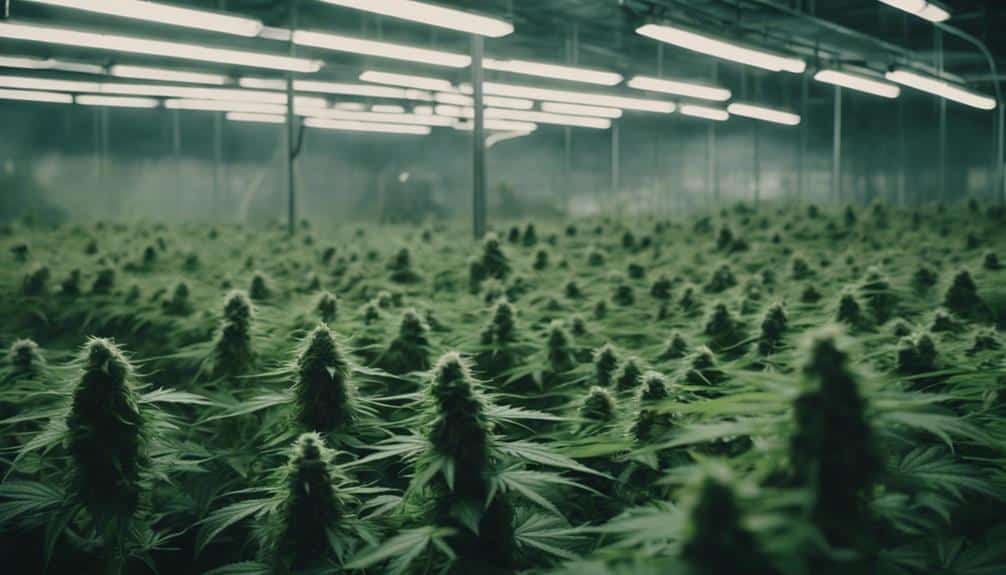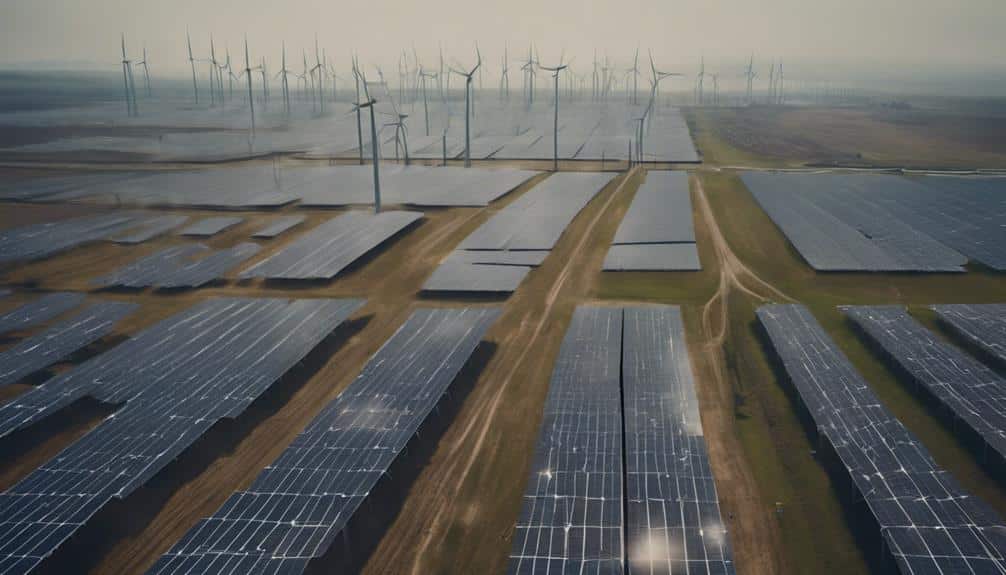Imagine you’re on a hot air balloon, soaring high above the lush, green fields of cannabis. From this vantage point, the industry’s growth appears impressive and even beautiful.
Table of Contents
However, as you descend, you notice the flaws in the landscape – rivers running dry, fields stripped of nutrients, and smoke billowing from energy-hungry greenhouses. This is the paradox of cannabis cultivation where progress leaves a significant environmental footprint.
So what can we do to mitigate these impacts and make this booming industry more sustainable? Let’s explore that together.
The Ecological Footprint of the Cannabis Industry

You might not realize it but the cannabis industry casts a substantial ecological footprint impacting our environment in diverse and complex ways. Predominantly seen through increased carbon emissions and rising deforestation rates.
The indoor cultivation of cannabis requires an enormous amount of energy. Artificial lighting, temperature control systems, and ventilation all contribute to increasing carbon emissions. In fact, it’s estimated that cannabis cultivation accounts for 1% of total electricity use in the United States resulting in greenhouse gases that negatively affect our climate.
Simultaneously, increased cannabis cultivation contributes to alarming deforestation rates. Large areas of forest are often cleared to make way for cannabis farms impacting biodiversity and leading to a loss of precious habitats. This not only disrupts ecosystems but also releases stored carbon exacerbating climate change.
Therefore, it’s clear that while the cannabis industry may have financial benefits, it also presents environmental challenges. As someone invested in serving others, you need to be aware of these issues and seek sustainable solutions. The ecological footprint of cannabis isn’t just a ‘green’ issue—it’s a universal one.
Water Overuse in Cannabis Cultivation
Beyond carbon emissions and deforestation, cannabis cultivation also places a significant strain on water resources as the plant’s growth demands extensive irrigation. The inherent water needs of cannabis combined with inefficient irrigation techniques can lead to substantial water overuse.
To mitigate this, it’s essential to develop and employ smarter irrigation techniques and water recycling practices. Here are some possible strategies:
- Utilizing drip irrigation systems to reduce water wastage
- Implementing water recycling systems for reusing run-off water
- Using soil moisture sensors to optimize irrigation scheduling
- Implementing rainwater harvesting systems for irrigation
- Incorporating hydroponics systems that use significantly less water than traditional farming methods
Each of these methods has its own benefits and challenges but they all aim to reduce the water footprint of cannabis cultivation. By integrating these strategies into cultivation practices you can contribute to a more sustainable cannabis industry. The goal isn’t just about meeting the current demand for cannabis but doing so in a manner that respects our shared environment.
The Growing Problem: High Energy Consumption

While water overuse is certainly a concern, there’s another pressing issue in cannabis cultivation: the industry’s high energy consumption. This growing problem contributes significantly to our global carbon emissions exacerbating the climate crisis. Traditional indoor cannabis farms rely heavily on high-intensity discharge (HID) lamps which consume vast amounts of electricity.
Considering that cannabis farms often operate 24/7, keeping their lights on for extended periods increases the demand for energy and results in substantial carbon emissions. Such practices don’t align with our collective responsibility to reduce our carbon footprint and protect our environment.
But there’s hope. Innovations such as LED lighting are making a positive impact. LED lights are more energy-efficient than traditional HID lamps consuming less electricity and producing less heat. This means lower energy costs and reduced carbon emissions—a win-win situation for both growers and the environment.
Embracing these sustainable technologies is a step in the right direction. As you continue to serve others through your work in the cannabis industry it’s crucial to consider the environmental implications of your actions.
Pesticides and Soil Degradation Concerns
Have we considered the impact of pesticides and soil degradation risks in cannabis cultivation? The use of pesticides and synthetic fertilizers in cannabis farming has been a significant environmental concern. These chemical alternatives while effective in pest control and improving crop yield are major contributors to soil degradation and pollution.
In exploring deeper into cannabis cultivation you’ll find that:
- Pesticides can contaminate ground and surface water affecting local biodiversity
- The overuse of synthetic fertilizers leads to nutrient imbalance in the soil rendering it less productive over time
- Harmful residues from these chemicals can end up in the final cannabis product posing health risks to consumers
- Soil degradation reduces the land’s capacity to capture and store carbon thus contributing to climate change
- The use of chemical alternatives fosters a dependency cycle making it harder for farmers to transition to sustainable practices
On a brighter note, organic fertilization presents an environmentally-friendly alternative. It not only nourishes the soil but also enhances its structure and water-holding capacity. However achieving a balance between productivity and environmental stewardship in cannabis cultivation is a challenge that requires further research and attention.
Sustainable Solutions for Green Cultivation

Navigating the path to sustainability you’ll find that green cultivation techniques present promising solutions to the environmental challenges posed by cannabis farming. Organic cultivation eliminates synthetic pesticides and fertilizers reducing soil and water pollution. It enriches the soil promoting healthy ecosystems and biodiversity.
But it’s not just about ditching chemicals. It’s also about using resources wisely. From water-saving irrigation systems to energy-efficient lighting, a shift towards sustainable practices can significantly cut down on resource consumption. These changes aren’t just good for the environment they’re also cost-effective in the long run.
Hemp sustainability is another crucial aspect of green cultivation. Known for its fast growth hemp can improve soil health sequester carbon, and requires less water than traditional crops. Plus every part of the plant can be utilized minimizing waste.
Conclusion
We’ve seen the heavy toll pot farming takes on our planet from draining water resources to skyrocketing energy consumption and degradation of our soils. The challenge is real but so are the solutions. We can usher in sustainable practices turning the tide for ‘green’ cultivation. It’s not just about the ‘high’, it’s high time we make this industry truly green. The choice is ours for the sake of Mother Earth.
As a devoted advocate for sustainable cannabis cultivation, I personally invite you to visit me at Doc Greenly. You can explore more about this topic and how we can make a difference together at docgreenly.com. If you prefer a direct conversation feel free to give me a call. Let’s join hands in making the cannabis industry a beacon for environmental sustainability. Your action today can make a world of difference for our tomorrow.

